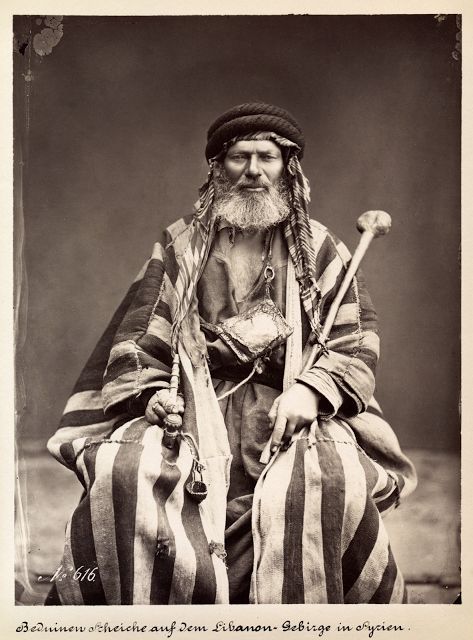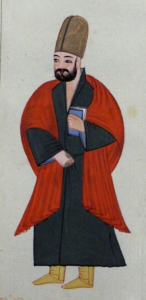Any definition of an Ottoman Turkish word for a garment involves speculation. Words changed definitions radically between the 16th century and the century that modern scholarship coalesced around, the 18th century; and many modern scholars are blithely unaware of this, so they happily describe 16th-century garments with terms that are centuries out of date.
Worse, the Ottoman Turks weren’t big on describing cut and style. They’ll tell you what color of silk a hil’at (robe of honor) was made of, where the silk came from, where the hil’at was made, and who the sultan gave it to, but they won’t tell you what made a hil’at a hil’at. We have a palaceful of garments, and a book’s worth of garment names, but no way to connect the two.
This page is my attempt to make the connection. Using estate records, contemporary images, lists of market rules, extant items, Ottoman Turkish dictionaries of various ages, Turkish and English-language scholarship, and the help of fellow amateur scholars, I’ve tried to close the gap between object and word.
Robes
This section covers shirts, jackets, and overcoats as well as kaftans.

19th-century Lebanese Bedouin sheik in a striped aba. The variety of striped wool used to make his aba is also known throughout the Middle East as aba.
Aba
The aba was a loose, sleeveless overcoat of coarse wool (also called “aba”) that originated in Arabia.1 19th-century Middle Eastern aba were long rectangular ponchos sewn up the sides and slit down the front, wide enough that the “sleeves” covered the arms. A source on early Mevlevi dervishes’ clothing equates the aba with the nemed, a working-class man’s felt overcoat (see nemed), and also states that the Turkish aba was slightly longer than knee-length and closed down the front.
The aba was worn primarily by working-class men, but higher-end versions made of expensive wool broadcloth (çuha) appear in estate inventories and may indicate that the aba appealed to well-off men as well.
Ağrız
The ağrız is a mystery. It appears nowhere else in the literature or on the Turkish Internet, and no estate records list it, but it appears over and over and over in descriptions of slaves captured in Üsküdar. This is everything we know:
- It’s an upper-body garment.
- For most men, the ağrız is their only upper-body garment. (This isn’t unusual for this set of records.) The one man who also wears another upper-body garment wears a kebe (felt coat), and the ağrız is specified as being inside it, so the ağrız is definitely an inner garment, not a coat.
- Other garments in the same records are listed as being made of ağrız, so in the grand tradition of aba, kebe, keçe, çuha, kürk, and nemed, ağrız is a fabric as well as a garment.
- It’s also a garment that can be made of other fabrics; the records mention an “aba ağrız,” an ağrız made of aba wool cloth.
- On the rare occasion that an ağrız garment’s color is specified, it’s dull: dun, gray, “dark,” black, white. That suggests undyed wool or other coarse animal hair.
- If the ağrız is made of animal hair, then it’s felted, not woven. Woven fabric is costly, and the ağrız is an agricultural slave’s garment.
Dolama
The dolama’s name literally means “wrapped,” and the version of the dolama worn by lower-ranking janissaries was a knee-length overcoat that had no buttons and had to be wrapped around the body and tied shut with a belt. Presumably the dolamas worn by women and non-military men were of a similar type.
The word “dolama” is also added to other garment types–for instance, “kaftan dolama.” I’m still researching whether this means a buttonless inner kaftan, or a kaftan-length (= full-length) dolama coat, or something else entirely.
Nemed
The nemed, whose name means “felt,” was a felt garment worn as an overcoat by working-class men. In Istanbul-area court records, it appears only in estates from semi-rural Üsküdar, and especially in descriptions of escaped male slaves. Because the nemed was a humble garment it was attractive to dervishes, who turned away from worldly wealth and comforts.
Thus far, the only source I’ve found for the nemed is Şâir Muhayyilesinde Mevlevî Kisvesi, where it appears as an article of 15th- and 16th-century Mevlevi dervishes’ dress:
Abâ veya nemed, dervişlerle aşağı tabakadaki ilmiye mensuplarının ve medrese talebesinin, küçük esnaf, dervişler ve hali vakti yerinde olduğu halde yaratılışı dervişane kimselerin giydiği kalın softan imal edilen, genellikle geniş ve kısa; dizden biraz aşağıya inen; üst tarafında başın geçmesi için birer delik bulunan, kolsuz üst giysisine denilirdi. Şiirde, bu elbiseyi giyenler abâ-pûş veya nemed-pûş biçiminde adlandırılır. Nemed, keçe, kebe, tiftik, kepenek, kaba yün manasına gelen Farsça bir kelimedir.
The abâ or nemed is usually long and roomy, made of thick soft material, worn by lower-level dervishes, madrasa students, small craftsmen, and the [well-off?]; a little longer than knee-length; it was said to be a sleeveless top garment with a hole in its upper part [for the head] to pass through. In poetry, those wearing this dress are called “abâ-pûş” or “nemed-pûş.” Nemed, felt, kebe, mohair, cape, is a Persian word meaning rough wool.
[godawful translation by me, assisted by Google Translate]
The source equates the nemed with the aba. Possibly the difference is that the aba was made of woven cloth, while the otherwise identical nemed was made of cheap, bottom-of-the-barrel-status felt. If that’s true, then the fact that nemeds appear only in semi-rural men’s estates and were worn by a significant number of slaves hint at a level of costume history that’s absent from the scholarship.
Trousers
…And underwear.
Don
The word “don” is proof that the urge to use euphemisms is universal. Originally a generic word meaning “garment,” by the late 15th century it meant, you know… garments. Unmentionables. Undercrackers. Drawers. Underpants.
Don continued to mean “garment”–for example, donlık was a piece of fabric long enough to make a garment–but if you’re a 16th-century scribe inventorying someone’s estate and the next item to appraise is a pair of knickers, you write “don.”
Synonyms or Similar Garments: Cebedonu
Headgear
Headgear is one of the most term-heavy areas of Ottoman garment studies, so this section focuses on women’s headgear.
Arakiyye
“Arakiyye” is the generic term for a hat, especially a woman’s hat. The original definition referred to a type of hat that men wore as the base for a turban, but by the late 16th century it had transferred to women’s headgear.
The term appears in the estate records when the standard female headgear was a pillbox cap, remains when the cap turns to a cone, and is still there when the cone turns to a tapered cylinder, so it’s not a reference to any particular shape of hat. It’s simply, frustratingly, a word for “hat.”
Arakçın
The tapered-cylinder hat of the early 17th century is referred to by some sources as arakçın (ah-rahck-ch’n). The word is most commonly used in reference to hats worn by the wealthy, like the extant c. 1625 arakçın belonging to Hanzade Sultan, so it may refer to a particular style of tapered-cylinder hat.
Çenber
The çenber, or çember, is one of the mystery garments. It literally means “circle.”
Ingilzce Osmanlica: Among other possibilities, this dictionary lists “1. A square handkerchief. 2. A handkerchief bound round the head as a fillet by women. [….] A neck-kerchief.”
Kaşbastı
An embroidered band that women wore around the band of their hats, with or without a headveil. The term doesn’t appear in any of the sources I’ve studied, but the Topkapı Palace collection applies the term to several 16th-century bands. It may be a courtly term for çenber.
Nezkeb
Sources are unanimous in claiming that the nezkeb (or nezkep) is, as Ingilzce Osmanlica says, “A woman’s coif or kerchief.” The question is, what kind of coif or kerchief was it? Estate records frequently describe it as colored, so it couldn’t be the headscarf that women often wore over their hats, which was always white. Both estate records and the 1600 narh defteri (official market price list) mention nezkebs made of luxury silks, so the nezkeb was meant to be seen. Hülya Tezcan, the former curator of the Topkapı Saray Museum’s textiles section, says, “These headscarves were lined, trimmed and fringed and only forty centimeters in width, which means that these narrow and long headscarves must have been worn by wrapping them around the head.”2 The problem is, there are no known 16th-century women’s headdresses that involve a colored scarf wrapped around the head.
To solve the mystery, fellow Ottoman Turkish SCAdian geek Alison Petrisek and I tried working backward. Tezcan’s reference is the narh defteri (official market price list) of 1640, a time when fashion had progressed through the pillbox hats of the 16th century, the conical hats of the turn of the century, and the tall tapered cylinders of the early 17th century, to the pinnacle of Ottoman genius in devising silly hats, the upside-down-vase hotoz of the mid-17th century.
Makrama
Takke
The takke or takye is a skullcap that men wore under their hats to keep their hats clean, and that very low-status men might wear as their only head covering. Some women owned takke, but it’s unknown whether they wore a takke on its own or under another hat.
Tarpuş
Not a 16th-century hat! Tarpuş is the Turkish pronunciation of the Arabic ṭarbūsh, a late 17th-century word3 for a fez-like men’s hat in style at the time. It was later picked up and applied to the pillbox-shaped caps women wore in the 16th century. I’m still looking for the word women would have actually used in the 16th century; my research so far leads me to the generic “arakiyye.”
- “ʿABĀʾ,” Encyclopedia Iranica. Accessed on 11/13/17.
- Tezcan, Hülya. “Sixteenth and Seventeenth-Century Women’s Fashion at the Ottoman Palace.” In P, Issue 3, Spring-Summer 2000, p. 10.
- Source: The Free Dictionary, https://www.thefreedictionary.com/tarboosh, accessed Nov. 22, 2017.




